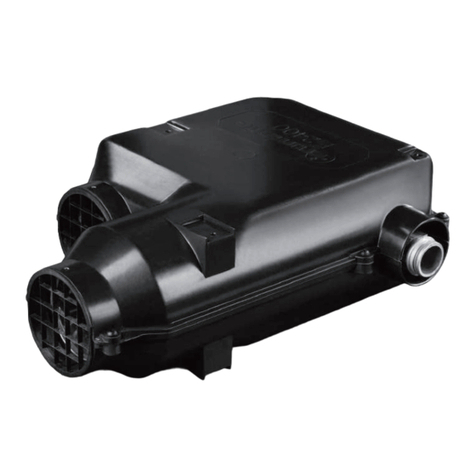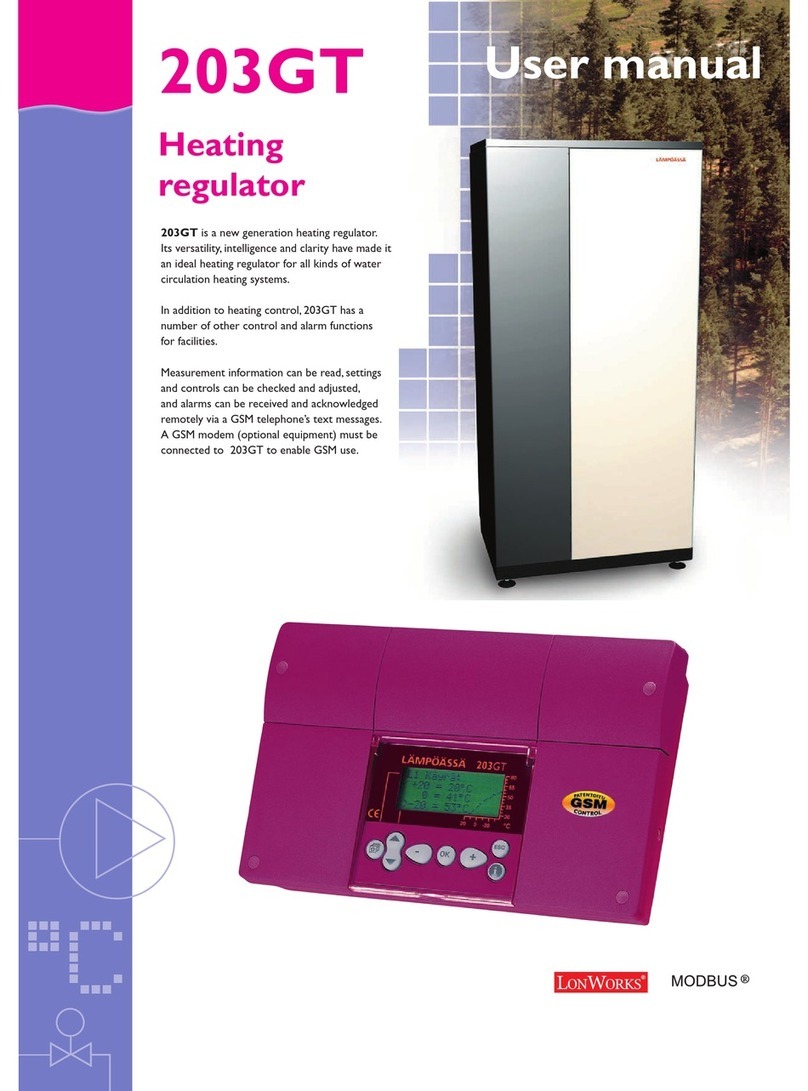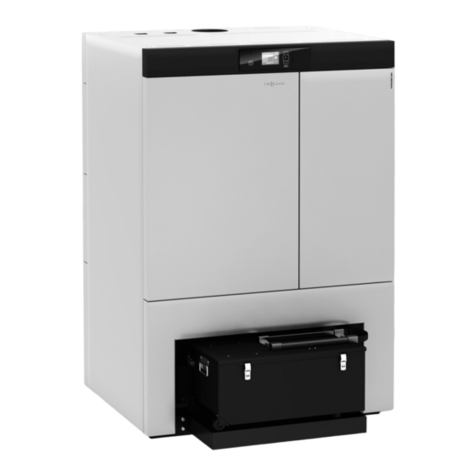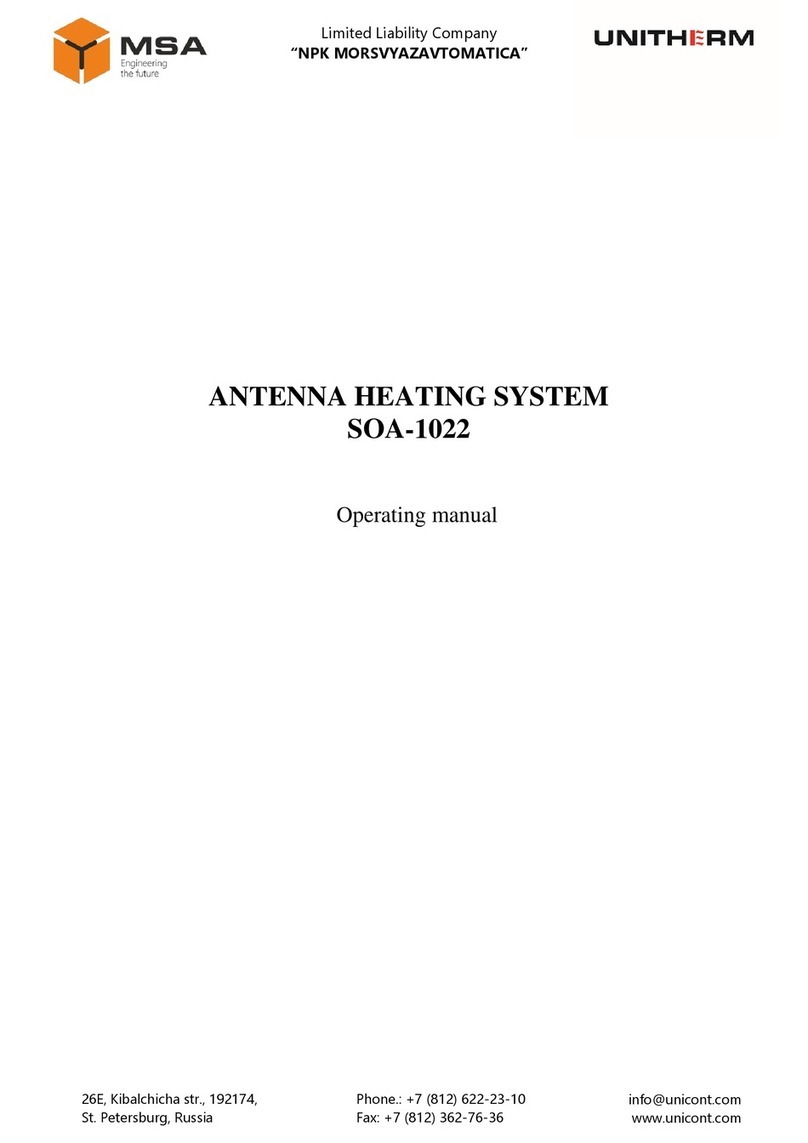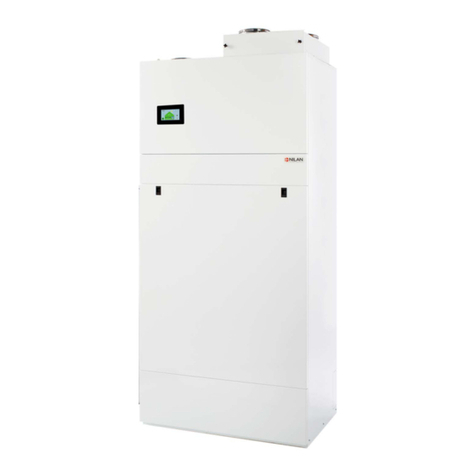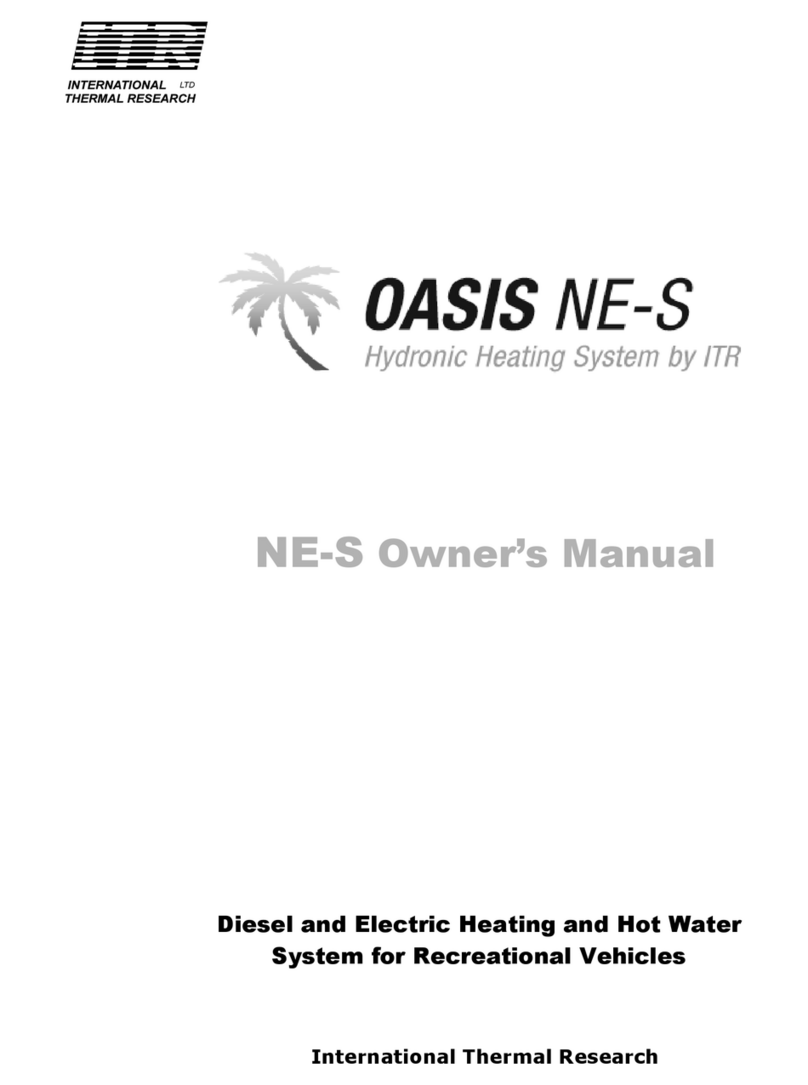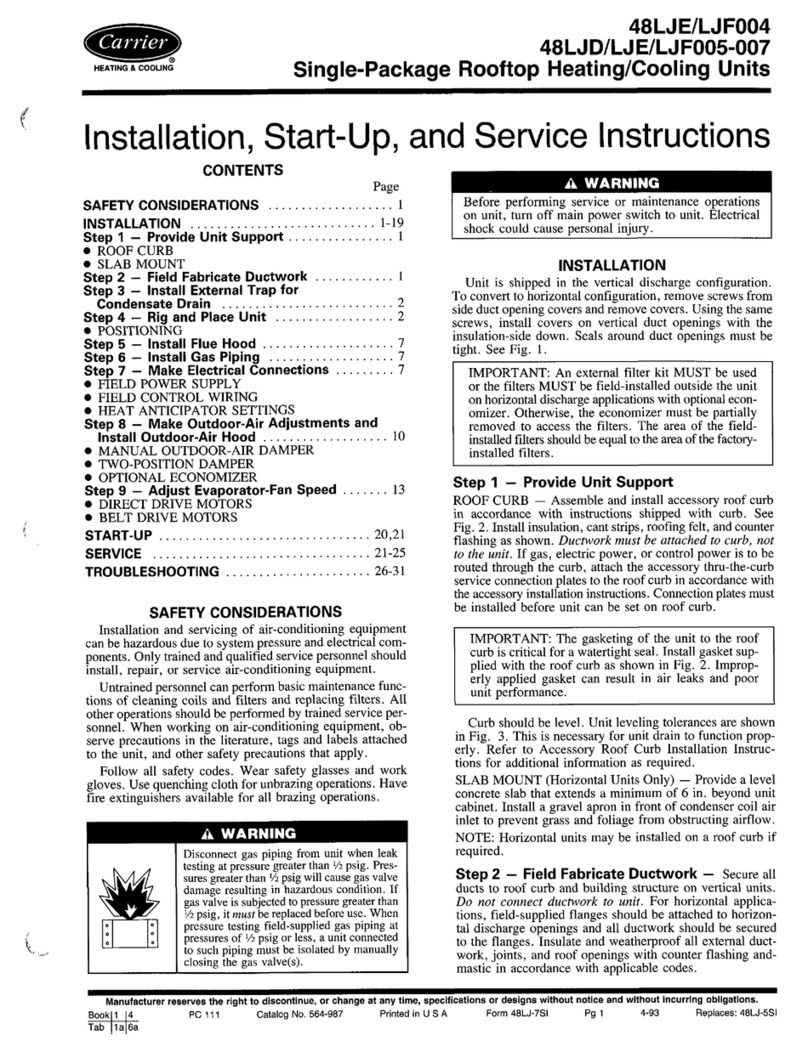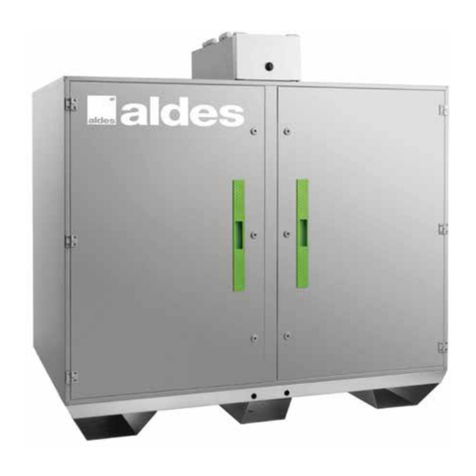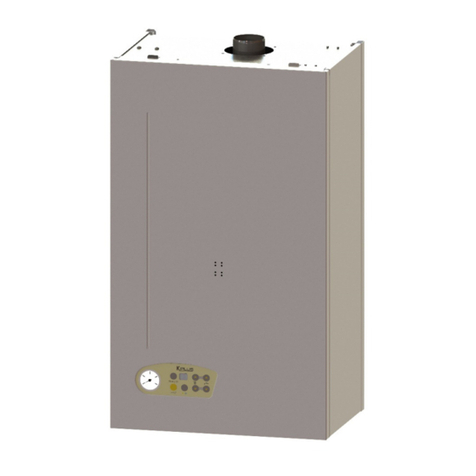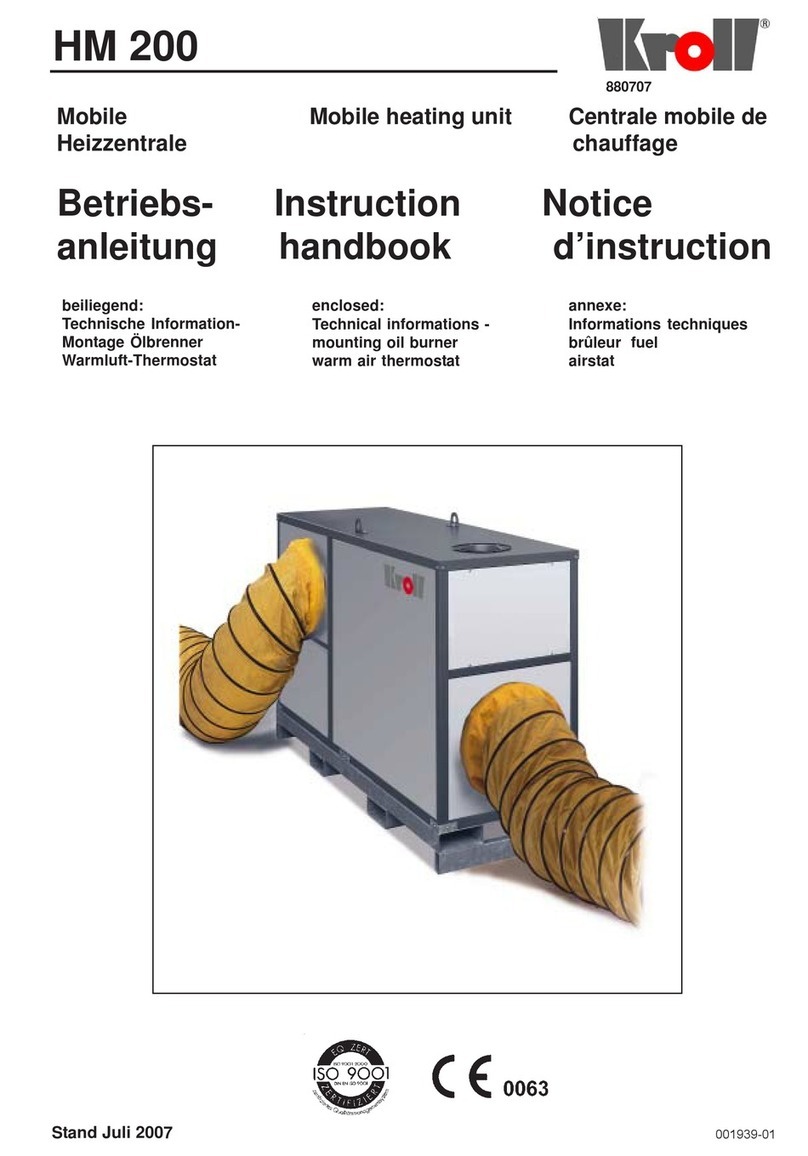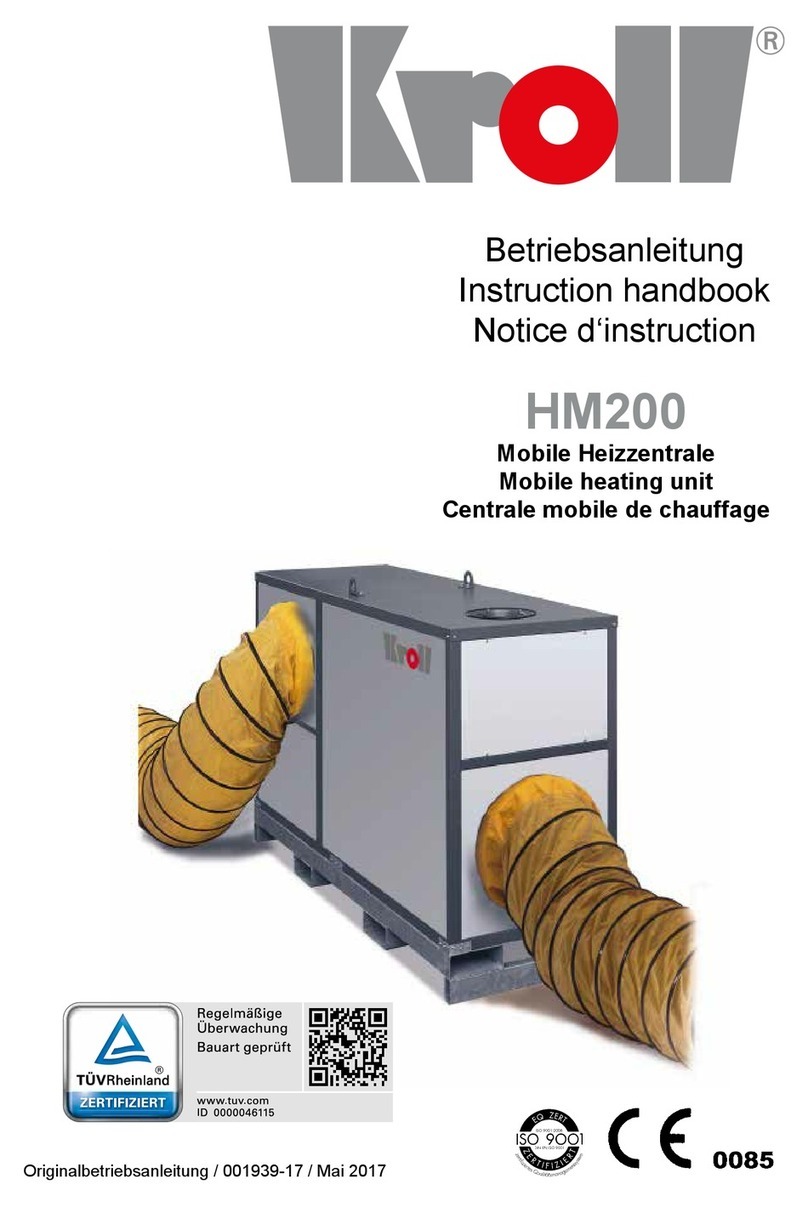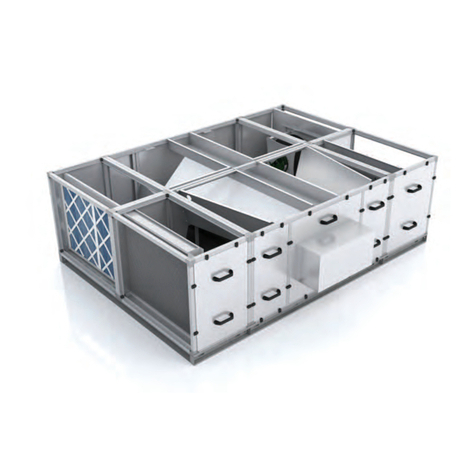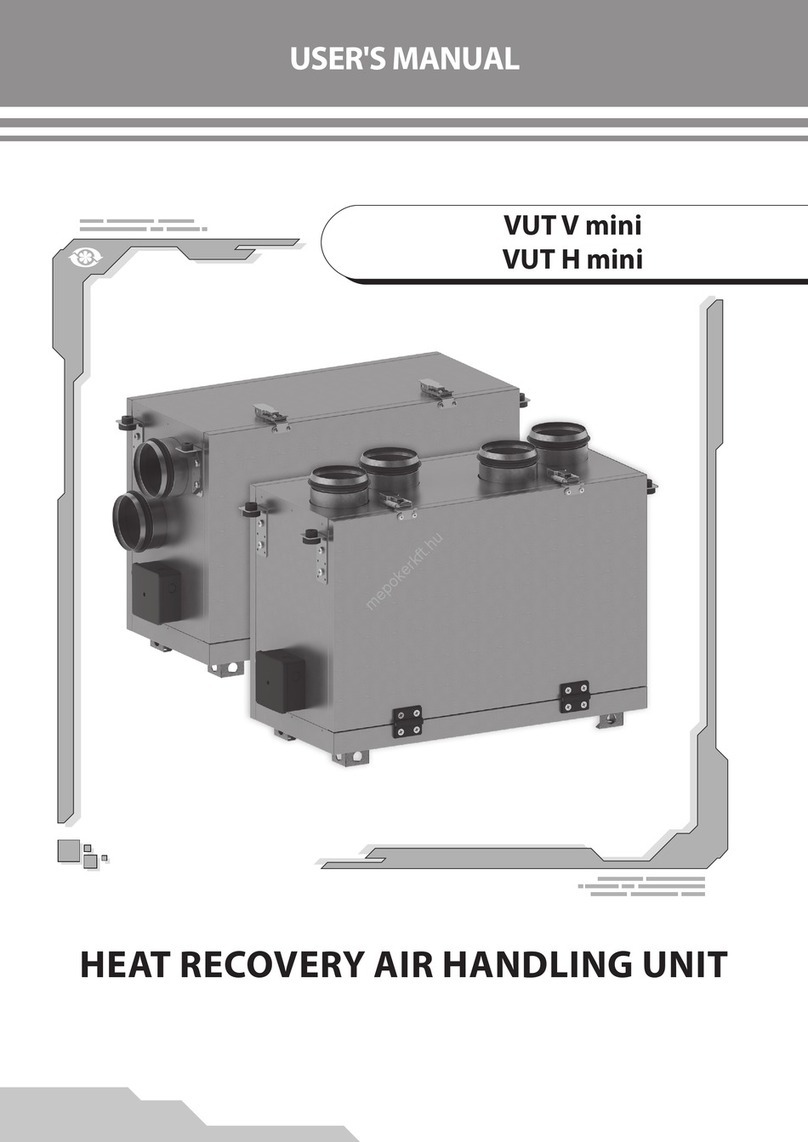
2
HEATING PLANT DESIGN
Multi-Temp heating plants are comprised of individual
cast iron modules that are piped to common headers to
provide large hot water heating capacities. They are de-
signed and intended for use for a central space heating
system, for volume water heating, or for combination
space heating/volume water heating. Each module is
self-contained with its own set of controls and can oper-
ate independent of the other modules. Multi-Temp mod-
ules can be arranged to fit just about any available area.
Products of combustion are vented through each mod-
ule’s vent connector, connected to a manifold (breeching)
for joining individual connectors. Breeching is connected
to a chimney which provides the necessary draft.
The objective of a Multi-Temp heating plant control sys-
tem is to relate plant output to the actual heating load by
automatic step-firing. This means that more or fewer
modules are operated in response to an increase or de-
crease in actual heating load. Hydrotherm has develop-
ed three basic methods (levels) of control which meet
most operating requirements encountered. Typical wir-
ing diagrams for these basic methods are provided in the
appendices at the rear of this manual. Special control
system designs can be developed through the Hy-
drothermapplications engineering group.
CODE COMPLIANCE
Installations must conformto requirements of the au-
thority having jurisdiction. Where required by the author-
ity having jurisdiction, the installation must also conform
to Standard for Controls and Safety Devices for
Automatically Fired Boilers, ANSI/ASME CSD-1.
All electrical wiring must be in accordance with the re-
quirements of the authority having jurisdiction or, in
absence of such requirements, with National Electrical
Code NFPA-70-latest edition. If an external electrical
source is utilized, installed module must be electrically
grounded in accordance with the requirements of the
authority having jurisdiction or, in the absence of such
requirements, with the National Electrical Code NFPA-
70-latest edition. UL listed power limited circuit cable is
almost universally approved for safety controls on heat-
ing equipment, either internally or externally, without pro-
tection of conduits or raceway.
For Canada, installations must be in accordance with
Standard C.S.A. C22.1 Canadian Electrical Code, Part 1
and Part 2, and/or local codes.
HEATING PLANT SHIPMENT
Heating plant packing list (attached to one of the pack-
ages) clearly lists the number of packages and their con-
tents. Check this list against all material on the job site for
completeness.
Heating Modules: Each module is shipped unjacketed in
its own carton and weighs 623 lbs. (maximum for MG-
385 module).
Draft Regulators: One for each module is shipped in car-
ton with module.
Jackets: There are twojacket sizes- “A" jacket to en-close
twoheating modules and “B” jacket to enclose three
heating modules. The correct combination of “A” and “B”
jackets are furnished to form a complete enclosure for
the entire heating plant.
Burners: When ordered, one Midco DS-45 power gas
burner for each module is shipped in a separate carton.
Optional Header Sets: When ordered, each header set
includes supply and return headers, pipe nipples, union
and self-aligning couplings. There are two header set
sizes -”A” headers for joining two heating modules and
“B” headers for joining three heating modules. The cor-
DANGER: Indicates an imminently hazardous situ-
ation which, if not avoided, will result in death,
serious injury or substantial property damage.
WARNING: Indicates a imminentlyhazardous situ-
ation which, if not avoided, could result in death,
serious injuryor substantial property damage.
CAUTION: Indicates a imminently hazardous situa-
tion which, if not avoided, may result in minor
injury or property damage.
The following terms are used throughout this manual to bring attention to the presence of potential hazards
or to important information concerning the product:
SECTION 1: INTRODUCTION
NOTE: Used to notify of special instructions on
installation, operation or maintenance which are
important to equipment but not related to personal
injury hazards.
